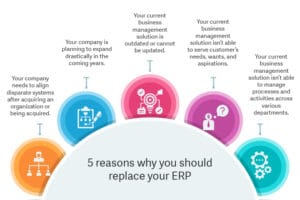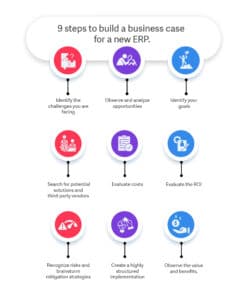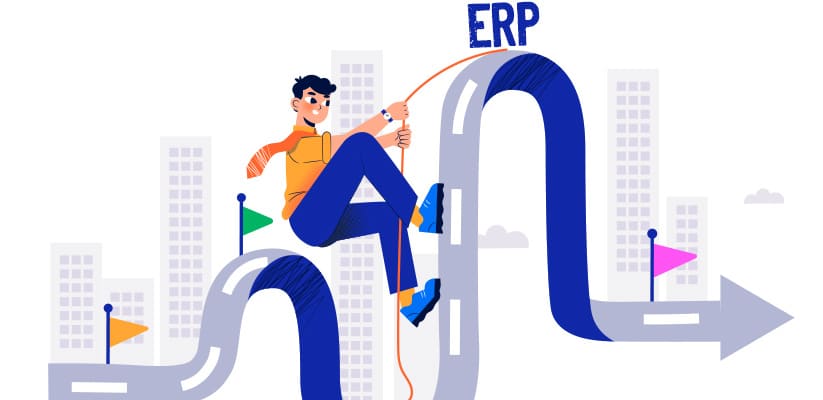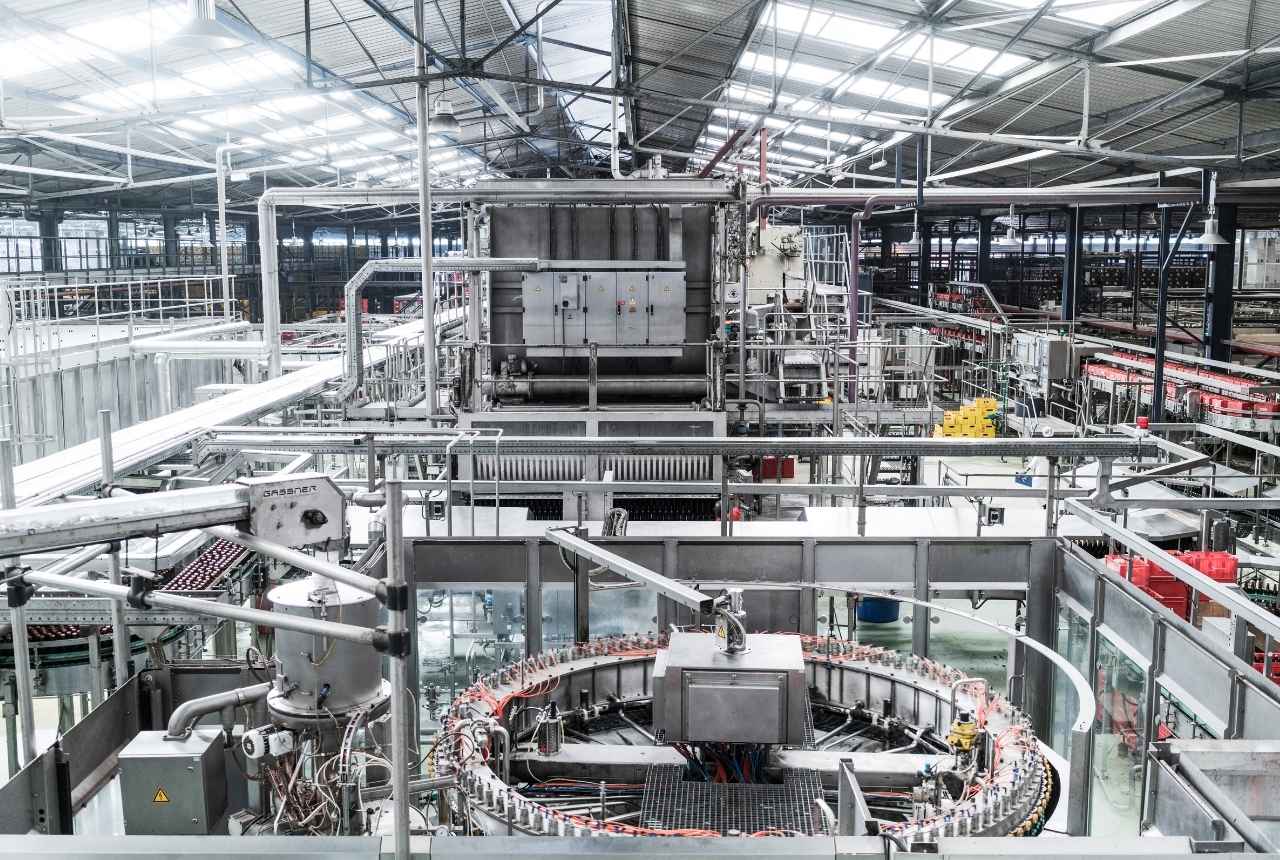Summary: ERP solutions have become the backbone of companies across industries because of several crucial features like automating redundant functions, saving employees’ time, providing a free flow of information to relevant stakeholders, and performing essential functions remotely. But yet some organizations still seem not to figure out the importance of implementing an ERP solution. Another reason is that the market has been flooded with numerous types of ERP software that have made it challenging for organizations to select the best one for themselves. Hence, you require a solid business case that helps you choose the right ERP solution based on your goals and investment capacity.
Companies justified their ERP investments based on their ability to improve their balance sheet until a few decades ago.
In those days, the primary reason for implementing modern integrated enterprise solutions was delivering Return on Investment (ROI) by enhancing Days Sales Outstanding (DSO), reducing inventory & operational costs, and boosting margins.
On the other hand, as Gartner calls them, today’s post-modern ERP solutions provide a broad range of solutions with added flexibility in numerous ways.
Now, you might be thinking that if ERP systems play such a significant role for companies across industries, do you need to build a business case for purchasing them?
The answer is Yes.
Why building a business case for ERP systems plays a significant role?
One of the most substantial challenges for most manufacturing and distribution companies is sorting the massive pile of available information. From compiling operational data and forecasting future performance metrics to ascertaining ROI, using the proper insight to build a business case can be challenging.
But it’s unavoidable.
It would help if you didn’t go forward with ERP initiatives without analyzing them in detail to ensure:
- The budget is accurate.
- The project scope is well defined.
- The goals are clearly defined and align with the company’s objectives.
Also, don’t give any approvals unless you know about the payback period and have identified the ROI.
Many organizations don’t invest the required time and money to build a solid business case because they view it as a justification for their investment in the technology.
On the other hand, a business case adds real value beyond this justification. It acts as a goal- and vision-setting exercise that allows you to lay down expectations, steer the project, and drive business transformation.
5 reasons why you should replace your ERP
Does your current ERP system provide all the capabilities you need? If not, then you must think about implementing a new ERP solution. But remember that ERP implementation has several challenges. For example, it can disrupt your core business operations, bring down employee productivity levels, and the implementation process can be expensive and time-consuming.

9 steps to build a business case for a new ERP
1. Identify the challenges you are facing
- What are your primary pain points?
- What processes do you need to fix urgently?
Critically analyze all your business processes to identify which of them are broken, slow, and inefficient. This analysis will reveal which obstacles you must remove to bring a significant improvement to your business.
Also Read: When is the right time to implement a multi-company ERP solution?
2. Observe and analyze opportunities
- How can your company benefit by improving processes?
- What solutions are available for the pain points you have identified?
Many ERP benefits come from interconnected processes and functions and the accessibility of critical data to all departments spread across varying geographies and time scales. Therefore, it’s crucial to understand which processes are indispensable for your organization and what type of obstacles are stopping you from achieving your goals.
3. Identify your goals
- What objectives does your organization want to achieve within a defined interval?
- Where do you see your organization five years down the line?
After identifying the potential benefits, it’s crucial to understand which ones are the most important for your organization’s success and aligned with the vision you want to achieve. Next, the senior management at your organization must identify the changes that will create the most significant impact on your business. Then, the functional managers should develop a step-by-step outline to realize those changes.
4. Search for potential solutions and third-party vendors
- Which vendors are highly reputed in your industry?
- Which software solution consists of all the functionalities that you require to execute your business operations?
- Which software solution is the best to fulfill your business needs?
There’s a high probability that you might have begun searching for a capable ERP solution much before you started working on your business case. But now, after recognizing your pain points, identifying your objectives, and understanding the potential benefits of ERP systems, you’ve got significant insights into your needs and how your organization can benefit by implementing the right ERP solution. In short, you can search for the right ERP solution quickly and conveniently.
5. Evaluate costs
- What is the total cost of the ERP implementation project?
- What are the primary functionalities that can increase or decrease the implementation cost?
A real business case requires an accurate evaluation of the cost required for implementing the ERP software. Of course, the most significant part of the expense is the software itself based on various parameters, such as the number of users, employee training hours, data migration, whether the solution is hosted on-premise or on-cloud and many more. Other costs include change management, software configuration, project management, maintenance fees, licenses, and other implementation services.
Also Read: Top 5 ways to drive a successful multi-company ERP implementation
6. Evaluate the ROI
- What is the total value of the intangible benefits?
Once again, look at the opportunities and the goals that you identified previously to calculate the ROI. Your ROI will typically come from more efficient production and decreased inventory, operating, and labor costs. To get a clear picture of the benefits, you should compare the current system’s operating cost with the system that will replace it. Also, remember that intangible benefits add real value to the company’s total revenue. For example, a substantial increase in customer satisfaction means a higher number of repeat sales, leading to more revenue.
7. Recognize risks and brainstorm mitigation strategies
- What factors put project success and potential benefits at risk?
- What mitigation strategies can reduce the risk quotient?
Significant changes to enterprise systems increase risks. On the other hand, effective change & project management, extensive project planning, and judicious resource allocation help mitigate the risk.
8. Create a highly structured implementation strategy
- What is the method to implement the solution?
At the outset, you need to evaluate the project’s business value and have an excellent understanding of how the project will move forward. In addition, it requires a high-level understanding of the resources needed, time investment, and implementation schedule.
9. Observe the value and benefits.
- What benefits will each department get?
- What are the primary reasons for the requirement of a new ERP?
Remember that business stakeholders will always have questions regarding implementing a new ERP or up-gradation of an existing ERP. You need to present an infallible business case that provides convincing logic about the short-term and long-term benefits of implementing the ERP software. Remember to substantiate the functional benefits of a new and improved ERP solution to each department in numbers.

Conclusion
A business case isn’t just a document that justifies implementing a new ERP solution. It’s a roadmap for business transformation that provides a convincing rationale for the benefits each organizational department will gain after implementing ERP software. The best part is that it also acts as a monitoring tool that keeps the implementation process in check and observes the relationship between different stakeholders involved in the project.
STAY UPDATED
Subscribe To Our Newsletter
At Sage Software Solutions (P) Ltd., we are home to world-class ERP software and CRM software that will solidify your business tech support fundamentals and enable you to build a customer-centric organization. You can also write to us at sales@sagesoftware.co.in.
Disclaimer: All the information, views, and opinions expressed in this blog are those of the authors and their respective web sources and in no way reflect the principles, views, or objectives of Sage Software Solutions (P) Ltd.





